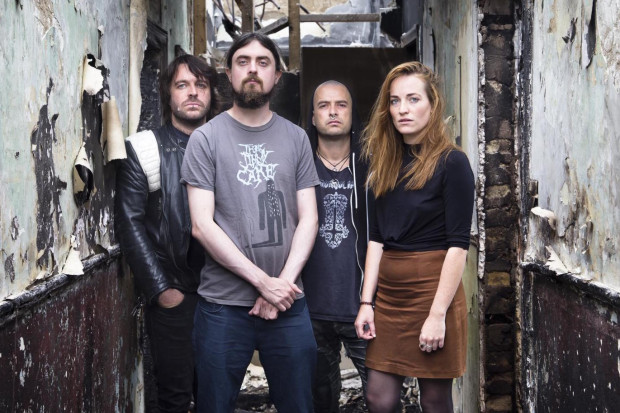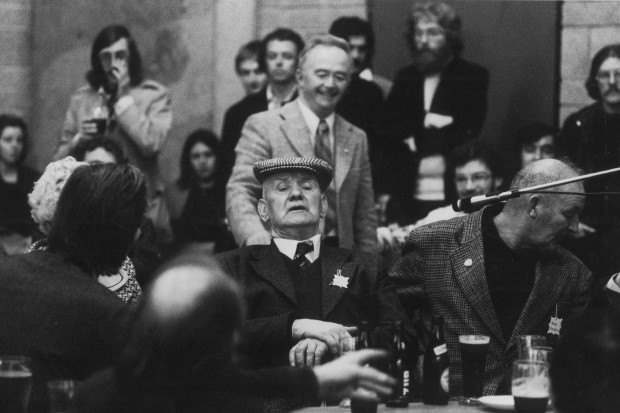Live Reviews: Garry Walsh, Máire Breathnach, Dave Hennessy & Donal Clancy
Garry Walsh, Máire Breathnach, Dave Hennessy & Donal Clancy
Music Network Tour, Briery Gap, Macroom
21 May 2006
The traditional music repertoire consists of many parts. There are the old tunes, which were handed down with the Ten Commandments, or so we are led to believe. There are the new tunes, which often sound as if somebody has actually gone to the trouble of composing. And then there are the lost tunes, such as those championed by flute-player Garry Walsh.
A couple of years ago, Walsh appeared as if from nowhere on the Cork traditional music scene with a bag of tunes that nobody knew. He was from Manchester, which is not exactly nowhere, and his music came from within his own family, in particular his West Cork father and his Louth mother. Surprised by the fact that these tunes had faded from the repertoire, he has made something of a crusade of their re-introduction into the common tune book. His 2004 debut album, Uncovered, was a first step in this musical redevelopment process. The Music Network tour undertaken in the company of Dave Hennessy, melodeon; Máire Breatnach, fiddle; and Donal Clancy, guitar, was the latest phase in the campaign.
The closing night of the tour found the quartet in the Briery (sic) Gap Theatre in Macroom, County Cork. Ten straight days and nights on the road, playing in ‘halls, churches and handball alleys’, as Dave Hennessy put it, can take its toll on both music and musicians. But, in this case, the experience had moulded the four musicians into a formidable unit, at ease with the music and with each other. Taking as its theme ‘Emigrant Music – Lost and Found’, this was more than just a tour; it bore all the hallmarks of a noble cause. Yet, thankfully, there were no high-minded exhortations to regard this music as being anything other than what it is, no worthy speeches from the pulpit.
The simple black box stage of the Briery Gap – and the lack of a PA system – created an intimate, nicely balanced acoustic. The opening jigs, ‘Mrs Sampson’s Delight’/‘The Lady’s Cloak’, set the agenda, with the four players giving a master class in ensemble playing. No-one pushed to the front; no-one hid at the back. The jigs, ‘Back to Skibbereen’/‘The Road to Cork’, were once played by John Joe Fahy, Walsh’s grandfather, on melodeon in the air-raid shelters of Manchester during World War II, to soothe the nerves of those taking refuge there. In recreating the atmosphere, Hennessy took the first jig at a slow, calming pace before changing up through the gears in the company of the others.
n the midst of all the tunes, Walsh was persuaded by both fellow musicians and audience to sing. Despite protestations of ‘an awful cold (‘You can’t have a cold for ten days,’ responded Clancy), he gave a warm understated version of ‘My Willie O’. Hennessy moved into comfort territory with the ‘Blue Bonnet Polka’ set – extraordinary rhythm work driven by a great, growling bass. For once, the guitar was superfluous. The first half was wrapped up with ‘The Trip to Cullenstown’ and Hennessy’s own ‘Phoenix Reel’, giving him the opportunity to reminisce about Cork’s one-time Golden Mile – six pubs on one corner, including the Phoenix and the Lobby. Now only two remain. Of those, The Phoenix labours under its new designation, The Beale Street Blues Bar.
Like the others, Máire Breatnach spent much of the evening in supportive mode, but stepped into the light on a number of occasions. On the first, she painted a particularly fine viola background to Walsh’s unusual slow air, ‘Oileán na nAnam’. On the second, she played a pair of her own jigs, ‘An Gobán’ – clever without being smart-ass – and ‘Halloween’, a simpler, more orthodox but no less engaging tune.
Donal Clancy has a skilful left hand, demonstrating a highly developed harmonic sense – and a subtle right hand, showing a solid understanding of the accompaniment of traditional music. Guitar took the lead on ‘My Love is in America’/‘Farewell to Erin’ in a nod to the ‘other’ emigration, that which took place to the West rather than the East.
And there was so much more. The Cork/Louth link was underlined by the reels ‘Dried Bread and Pullet’/‘Down in the Twenties’. The wistful ‘Mardyke Waltz’¸ with its discreet, natural decorations, had echoes of Cork dance halls and Manchester kitchens. The inevitable encore comprised a set of Louth jigs as played by the Dominic Maguire Dance Band in the 1930s. Like what had gone before, this was nothing flashy, despite some delightful flourishes. This was gentle yet persuasive music; an acknowledgment of what has gone before and a reminder of the genuine depth of the repertoire.
Published on 1 July 2006
Pat Ahern is a musician and producer. He lectures in mathematics at Cork Institute of Technology.












